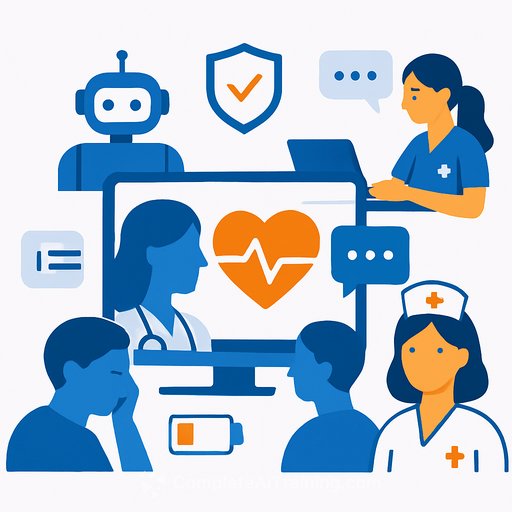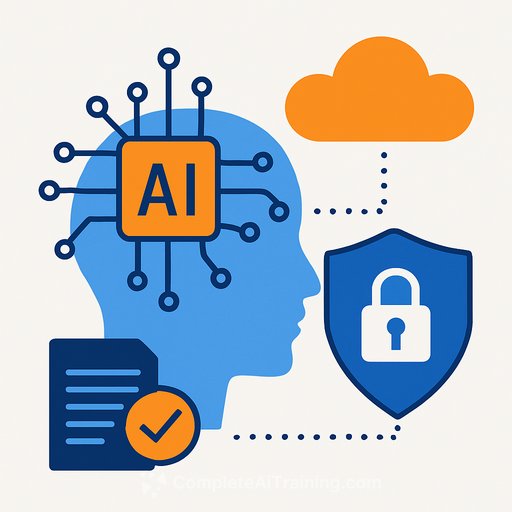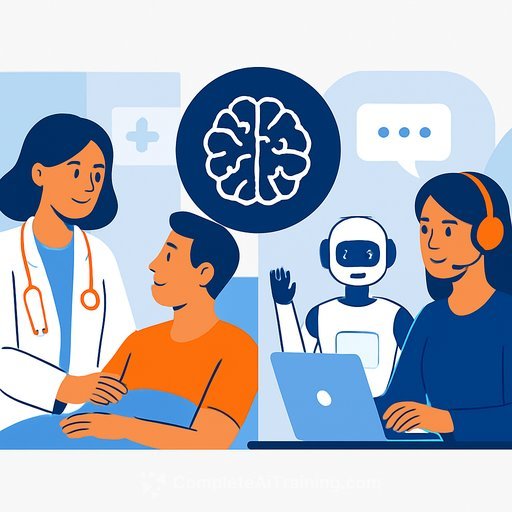Healthcare AI today: ROI shows up in support and patient experience, with fresh reality checks
Healthcare leaders are past pilots and are pressing AI into daily work. Results are clear in two areas: tech support and patient experience. Here's what's working, where the risks sit and practical plays you can run next.
Where ROI is showing up right now
A new Google survey of 600+ healthcare and life sciences leaders points to two wins: tech support and patient experience. Around 80% report improved patient engagement, 70% see higher satisfaction scores and nearly 30% report double-digit gains in experience metrics. Both tech support and patient experience were cited by 34% of respondents as already delivering ROI.
Agentic AI is gaining ground fast: 44% say they're using one or more AI agents, from single-task helpers to multi-agent systems that can take actions under human oversight. Top buyer concern remains data privacy and security, and nearly half already use agentic AI for security operations. Ripest near-term opportunities named by 22%: inventory tracking/restocking, medical image interpretation, patient screening and on-demand personal care-use cases that convert repetitive workload into measurable outcomes.
LLMs for patient messages: helpful, but time savings are neutral
Across 55,000 portal messages, clinicians with LLM support used AI in about 20% of replies. Drafting got faster by roughly 7% (331 seconds vs. 355), but the saved time shifted into review and edits-so total time stayed flat. The lesson: without the right workflow and guardrails, writing assistance won't reduce burden at scale.
See the journal for study details: npj Digital Medicine.
AI burnout tools: which components actually help?
Swedish researchers tested AI interventions built from five elements: engagement, control, journaling, psychoeducation and tracking "demands" on time and attention. The strongest gains came from combining Demands + Control, with meaningful benefits also seen from Demands + Engagement and Journaling + Psychoeducation. Translation: target workload clarity and perceived control first; then add reflection and education to reinforce behavior change.
Borrowing safety playbooks from outside healthcare
One provider didn't just benchmark-teams went onsite. After studying how other industries manage risk with AI, a cross-functional group visited a GE plant, a DuPont facility and the U.S. Army's 160th Special Operations Aviation Regiment. Those lessons are now being adapted to clinical operations, with an emphasis on scalable, industry-agnostic safety practices.
AI "anti-intelligence" check: fluency isn't depth
A timely reminder from a public thinker: AI moves from data to pattern to prediction. People move from experience to meaning. The takeaway is simple-LLMs can sound confident yet be wrong, so your edge is discernment and clear thresholds for human review.
Nursing + Copilot: ambient tools move into daily workflow
Microsoft's latest push equips nurses with ambient-enabled documentation and task automation inside existing workflows. Built with frontline input, Dragon Copilot focuses on reducing clicks, surfacing relevant context and offloading routine tasks. If your nursing leadership is hunting for quick wins, this is a low-friction place to start.
Early detection that knows its limits
Researchers at Mount Sinai introduced InfEHR, a system that links disconnected medical events to surface patterns that may predict future issues. Crucially, it can defer with "I don't know," which is a practical safety feature for real clinical use. Learn more from the journal: Nature Communications.
Quick hits
- Public sentiment: some U.S. regions are skeptical about AI filling healthcare jobs.
- Market noise vs. value: "AI-powered" labels are everywhere; filter for audited results and clear governance.
- Policy watch: new advocacy groups are spinning up AI task forces-expect more procurement scrutiny.
- Research notes: AI is counting bites to study childhood obesity, reanalyzing massive MI datasets for treatment clues and improving orthodontic growth prediction.
- Imaging pipeline: vendors continue to secure FDA clearances for neuro and vascular AI solutions, with emphasis on triage and quantification.
What to do in the next 90 days
- Focus pilots where ROI is proven: help desk chat, patient FAQs, intake and follow-up nudges.
- Stand up one agentic AI use case in operations: inventory tracking or imaging worklist triage with human-in-the-loop review.
- LLM messaging: set a standardized prompt library, define red-flag topics for mandatory human rewrite and track edit rates to improve prompts.
- Burnout reduction: test interventions combining Demands + Control; add journaling and psychoeducation modules if adoption holds.
- Nursing workflow: trial ambient documentation with a small cohort, measure note quality, click reduction and after-shift time.
- Risk safeguards: require vendor answers on PHI handling, data retention, model updates and incident response before purchase.
- Clinical safety: mandate confidence thresholds and "don't know" behavior for any predictive model that touches care decisions.
- Security operations: evaluate agentic tools for alert triage and playbook automation with strict audit trails.
Need structured upskilling for clinical, operations or IT teams? Explore role-based programs here: AI courses by job.
Your membership also unlocks:






